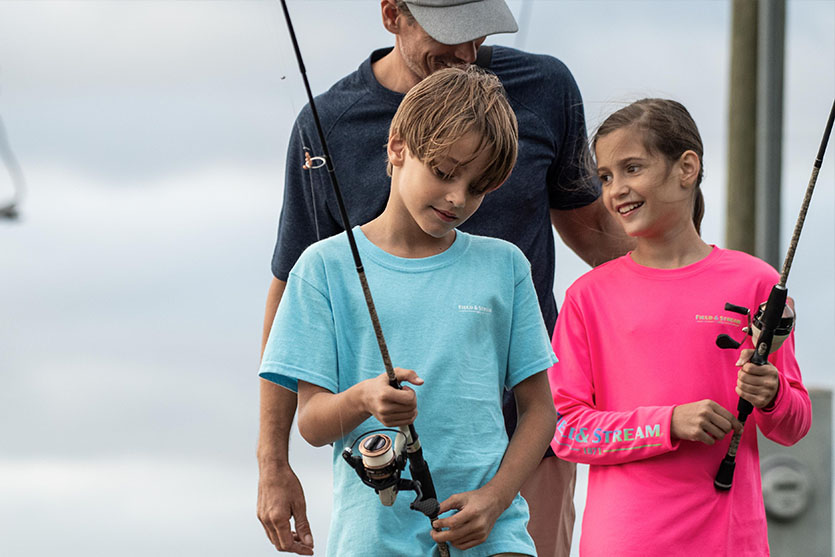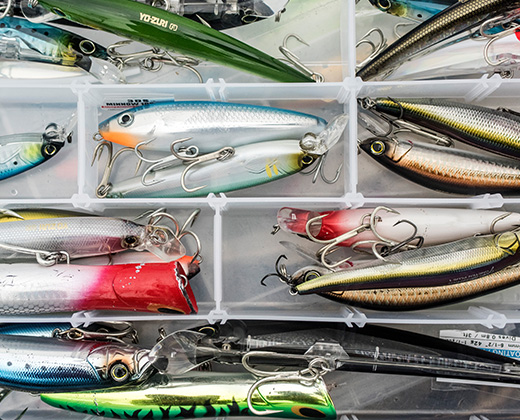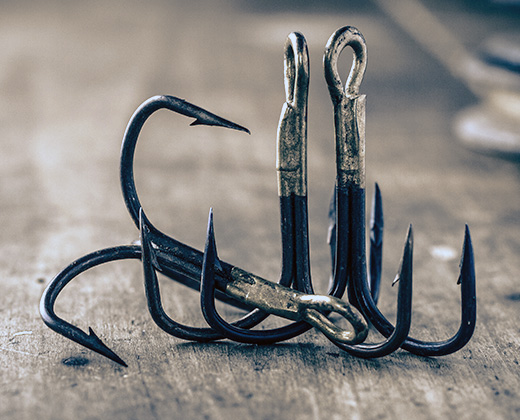Pro Tips Guide to Introducing Your Kids to Fishing
Whether fishing at a park lake or river dock, get your kids hooked on angling with this fishing guide.

One of the many great things about fishing is that there’s no age restriction. Anglers young and old can both enjoy a day spent casting into the teeming waters. Plus, introducing your young ones to the sport can help spark a long-lasting love affair full of casts, catches and memories.
Although introducing your kids to fishing can be a great way to create a shared bond, fishing with kids is much different than fishing with adults. You must consider differences in equipment and a change of fishing technique, not to mention find ways to maintain your child’s attention throughout your time outside.
Thankfully, by following this breakdown on teaching your kids to fish, you can help alleviate some of the stress before heading out to the nearest stream or lake with your little angler. We talked to three parents who have experience in navigating these instructional waters. Here are their tips on how you and your youngster can both cast the day away with a smile.
KEEP IT FUN, KEEP IT SIMPLE
For novice anglers, you want them to have a great time on the water, and a great time includes staying busy catching fish. While you might have dreams of hauling in an enormous bass or a record-setting trout with your child from the start, targeting these popular species might be too complicated to teach them at the introductory level.
But there are plenty of panfish, like bluegill or sunfish, that you can target just off the shoreline. These panfish are active eaters that can be relatively easy to catch, making them a fantastic target for young fishermen learning the ins and outs of the sport.
“My kids, they’ll stay at a pond all day long if they’re catching stuff,” Jerry Scott, father of two, says.
ANY SIZE IS A PRIZE
While there should be fish present in your spot, you shouldn’t worry about their size, as it’s quantity over quality when kids are the ones holding the reel. Most will believe that their hand-sized rock bass, and even their bait, will rival even the biggest of fishing trophies.
“They don’t need to go out there and try and catch a monster on their first, second and third fishing trip,” Morgan Lynch, avid fishermen and father of two, says. “They’ll be just as excited about the bait, so if they don’t seem as excited in catching the fish as they do about looking at the bait that you’re putting on the hook, don’t be discouraged.”
MAINTAIN THE ENTERTAINMENT
You should also come up with a plan for when the dreaded lull takes over your fishing spot. You know the feeling – when the fish suddenly stop biting and there seems to be no sign of when the action will return.
These stagnant drags in activity might be easy to overcome for more advanced anglers, but young children can easily become bored with the day, effectively losing interest and setting their fishing rod down for other activities like bug catching or playing in the mud.
When it comes to combating streaks of boredom during your fishing trip, DICK’S Sporting Goods Associate and father of three, Greg Umbras, adds having other planned activities, like a hike or a time set aside for more teachable moments, can be great go-to's if your fishing turns stale.
“That’s really the best thing, because then you’re not just going somewhere, not having any luck and then packing up and going home. Everybody’s miserable, everybody’s hot, and you didn’t really achieve anything. But if you can roll it into a different activity where you could go swim or go hiking, it helps keep them engaged,” he says.
While these multiple activities can help keep your child’s attention, always remember to monitor their engagement so that they don’t become too burned out and exhausted with the outdoors.
LEARN TO LOVE TEACHING
Lastly, don’t forget that, despite the lack of a classroom, you are teaching during this outing and your child will likely be curious about every little detail. Explain to them how to add a bobber to their fishing line, how to tie a specific knot and, most importantly, how to cast. Take the time to make sure they’re using the correct form when heaving their bait out there.
Lynch says he counts to three when teaching his children the act of casting.
“You can break down the motion of casting into three parts, and that’s kind of 'One, Two, Three.,’” he explains. “Walk through the steps: Push the button, bring back the rod, throw the rod forward. So, [break it down into stages] they can understand, making sure that there’s a repeatable process that they can think of every single time.”
You can even practice casting in the backyard prior to your fishing trip. One way is to have your little angler try to aim their cast so that it lands in a hula hoop or coffee can. Scott, meanwhile, has his own training routine with his sons.
“I put a piece of cork on the end of their line and let them practice trying to hit a bucket in the backyard. It was quite fun,” Scott says. “[There’s] lots of getting their lines crossed and knotted, but to this day, they still like to go out to the backyard and practice casting.”
You can also use this time to teach your youngsters about your state’s specific fishing rules and regulations, as well as other worthwhile lessons like catch and release techniques and conservation.
“You can divert their attention away from the actual fishing and make it a part of a larger approach to [a] responsible use of the outdoors,” Lynch says.
For a brush-up on your local laws and regulations, be sure to check with your respective fish and wildlife commission.
GEARING UP WITH TODDLER-SIZED TACKLE
Once you have a better grip on your expectations for your child’s first fishing trip, you can carry that mindset into packing the proper fishing gear. For your little angler, having the most advanced, expensive equipment isn’t a necessity. After all, they might not remain interested in the sport forever, and even if they do decide to carry on their interest, they will undoubtedly grow out of their youth fishing gear.
A simple ultra-light rod and a spinning or spincast reel with a trigger can be the perfect introductory setup. Look for rods that are between 3.5 feet and 5 feet in length, as this should be a good middle ground between short enough to handle and long enough for maximum performance. There are even kids fishing rods that feature their favorite television and movie characters to add more fun in casting out a line. Be sure to learn more about kids fishing poles with our tips on Choosing Kids’ Fishing Poles.
Your tackle should follow the same minimalist approach. Small soft plastics, brightly-colored jigs designed for panfish and other small lures can be great options for your rookie fisherman. Don’t forget your bobbers and sinkers, either.
Another key component to any fishing setup is the hook, but you should take some safety measures when gearing up your child. Look to use lures that feature barbless hooks, as opposed to other styles. If a snag does occur, it can be easier to remove.
Barbed hooks are best for live baits, so if you opt for this style, it might be best for you to put the worm on the hook for your child the first few times.
BONUS PRO TIP: To turn your barbed bait hooks into barbless hooks with one simple modification, simply pinch down the barbs yourself with a multitool or fishing pliers. This can help prevent potential injuries and snags. Note, be careful not to snap off the hook point. Clamping down too high on the barb may break the tip off.
Finally, Umbras adds to be prepared for a normal day outside.
“Make sure you have snacks and everything, like food, water, shade and sunscreen – the essentials when you’re going to be out on a hot day,” he says.
You want their fishing experience to be a positive one, so make sure that their spirits remain high and have a cooler of their favorite snacks or a small item to keep them busy during the lulls between bites. And don’t forget the camera to bring home the best catch of the day: that priceless photo.
Follow these tips and guidelines to reel in the good times with your little tykes this fishing season. Good luck!








